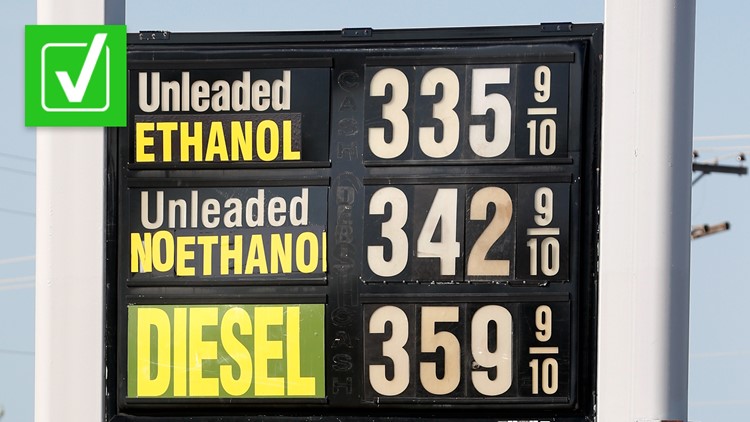President Joe Biden announced on April 12 that he would waive rules that restrict ethanol blending, allowing the year-round sale of E15 that is usually banned during the summer months due to air pollution concerns.
E15 is gasoline blended with up to 15% ethanol, which is most commonly made from corn. In 2011, the U.S. Environmental Protection Agency (EPA) approved E15 for use in light-duty conventional vehicles of model year 2001 and newer. E15 is often sold at gas stations as Unleaded 88 for about 10 cents per gallon less than E10, a spokesperson for AAA said.
Following Biden’s announcement, some Twitter users (here and here) have claimed that your car’s gas mileage will be worse if you fill up with higher-blend ethanol.
THE QUESTION
Is fuel efficiency worse with E15 gasoline?
THE SOURCES
- U.S. Department of Energy (DOE)
- Patrick DeHaan, head of petroleum analysis at GasBuddy
- U.S. Energy Information Administration (EIA)
- Iowa Renewable Fuels Association
- S&P Global
- National Association of Convenience Stores
- Growth Energy
THE ANSWER
Yes, fuel efficiency is worse with E15 gasoline, but only by a small amount for most drivers.
WHAT WE FOUND
Most types of gasoline available at gas pumps have an ingredient called ethanol mixed in. E10 gasoline, which is a blend of 10% ethanol and 90% gasoline, is sold in every U.S. state and more than 98% of U.S. gasoline contains up to 10% ethanol, the U.S. Department of Energy (DOE) says.
Ethanol contains about one-third less energy than pure gasoline, according to the U.S. Energy Information Administration (EIA). As ethanol content climbs higher, energy dips lower along with gas mileage.
Pure gasoline will give drivers the most miles per gallon, followed by E10 and then E15, but the differences are small. According to the DOE, vehicles will typically go about 3-4% fewer miles per gallon on E10 and 4-5% fewer miles per gallon on E15 compared to pure gasoline.
That means the difference in fuel efficiency between E10 and E15 is only about 1-2%, based on estimates from the DOE and other experts.
The Iowa Renewable Fuels Association (IRFA), a nonprofit representing the state’s industry for “renewable fuels” that include ethanol, says on its website that there is “no noticeable difference” in gas mileage between E15 and E10.
Patrick DeHaan, head of petroleum analysis at GasBuddy, also told VERIFY that there is a very small difference between the two. Additionally, mileage will likely vary for each driver since it’s based on factors such as driving behaviors and weather conditions, DeHaan said.
It’s also important to note that only a small percentage of U.S. gas stations currently sell E15. Biden’s directive doesn’t increase the number of gas stations selling the higher-ethanol fuel – it just makes it available year-round.
The National Association of Convenience Stores (NACS) said on March 10 that there are approximately 145,000 retail fueling outlets in the United States.
According to Growth Energy, a trade association that represents ethanol producers, there were about 2,630 gas stations that sold E15 as of March 22. After Biden’s announcement, S&P Global, a financial information and analytics company, said “infrastructure for higher-ethanol blends remains limited to about 2,300 stations centered in the Midwest.”
That means fewer than 2% of all U.S. gas stations sell E15, so the additional months of availability likely won’t make any major changes to fuel efficiency on a national scale.
Some proponents of the year-round sale of E15, like the NACS, say it will help to “enhance supply and lower prices for all Americans fuel consumers,” while some opponents argue that it actually won’t save drivers much money in the long run.
The Associated Press contributed to this report.



